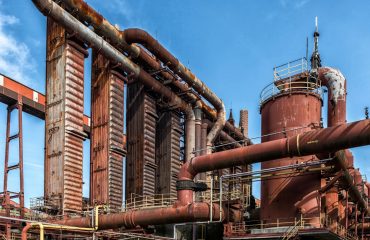Steel, a ubiquitous material in modern construction, demands specialized knowledge for safe and efficient implementation. This comprehensive guide delves into the essential training aspects for civil engineers working with steel structures, covering everything from fundamental design principles to advanced construction techniques.
Understanding Steel Material Properties and Behavior
A strong foundation in steel’s mechanical properties is crucial. This includes understanding concepts like yield strength, tensile strength, ultimate strength, and ductility. Civil engineers need to be proficient in interpreting material test reports and selecting appropriate steel grades based on project requirements and applicable design codes. Furthermore, understanding the behavior of steel under different loading conditions, including tension, compression, bending, and shear, is paramount. This knowledge informs the design process, ensuring the structure’s stability and longevity. Familiarity with different steel types, such as hot-rolled sections, cold-formed sections, and high-strength low-alloy steels, is also essential for making informed material choices. Understanding the potential for buckling and other forms of instability is crucial for ensuring structural integrity.
Steel Design Principles and Analysis Techniques
Effective steel design hinges on a thorough understanding of relevant design codes and standards, such as AISC (American Institute of Steel Construction) in the US, or Eurocode 3 in Europe. These codes provide guidelines for load calculations, member design, connection design, and stability checks. Engineers must be proficient in using various analysis techniques, including linear elastic analysis, plastic analysis, and finite element analysis (FEA). Software proficiency in programs like STAAD.Pro, ETABS, or RISA-3D is crucial for performing complex structural analyses and generating detailed design drawings. Understanding the principles of limit states design, which focuses on preventing both ultimate and serviceability limit states, is essential for ensuring structural safety and performance.
Steel Connection Design and Detailing
Steel connections are critical elements that transfer forces between different structural members. Proper connection design is crucial for ensuring the overall structural integrity. Civil engineers need to be familiar with various connection types, including bolted connections, welded connections, and composite connections. Understanding the principles of bolt design, weld design, and shear strength is essential. Furthermore, detailed knowledge of connection detailing is crucial for fabricators to accurately construct the steel structure. This involves creating detailed drawings that specify dimensions, materials, and fabrication tolerances. Software like Tekla Structures is often used for creating detailed 3D models and shop drawings for steel fabrication.
Steel Construction Practices and Quality Control
On-site construction of steel structures requires a strong understanding of erection procedures and quality control measures. This involves familiarity with various lifting and handling techniques, ensuring proper alignment and stability during erection. Engineers need to be aware of potential hazards associated with steel construction, such as falls, electrocution, and crushing injuries. Implementing robust quality control procedures, including inspections and testing, is essential to ensure that the constructed structure conforms to the design specifications and meets safety standards. Understanding the role of different stakeholders in the construction process, including fabricators, erectors, and inspectors, is crucial for effective project management.
Advanced Topics in Steel Design and Analysis
Beyond the fundamentals, advanced training in steel design and analysis can significantly enhance a civil engineer’s capabilities. This may include topics such as seismic design of steel structures, fire protection of steel structures, and the design of cold-formed steel sections. Understanding the principles of nonlinear analysis, which accounts for material nonlinearities and geometric nonlinearities, is crucial for analyzing structures subjected to extreme loads. Exposure to advanced software and techniques for analyzing complex steel structures, including those with composite action or specialized components, is beneficial. Staying current with the latest advancements in steel design and construction through continuing education and professional development is essential for maintaining a high level of competency.
In conclusion, comprehensive steel training is a cornerstone of a successful career in civil engineering. By mastering the principles outlined above, civil engineers can confidently design, analyze, and construct safe, efficient, and sustainable steel structures.
Tags: steel training, civil engineering, steel structures, steel design, structural analysis




